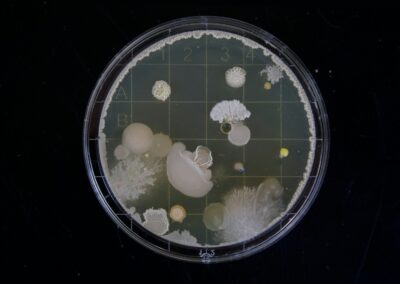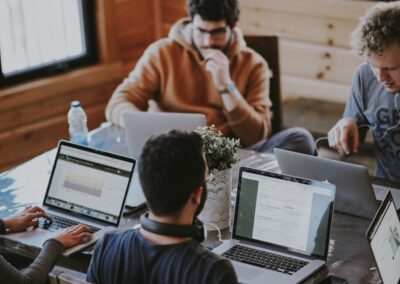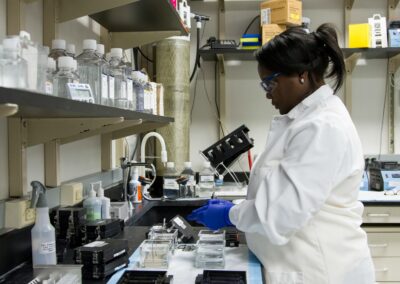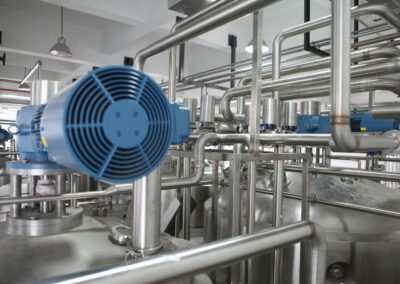Biosafety Measures and Regulatory Frameworks
The Potential Risks of Synthetic Organisms
The environmental impacts of synthetic organisms are a critical concern as the field of synthetic biology advances. These engineered organisms offer significant potential benefits in healthcare, agriculture, and environmental management, yet their release into the wild poses several risks. In regions like Saudi Arabia and the UAE, where innovation and sustainability are key priorities, understanding and mitigating these risks is essential for responsible technological development.
Synthetic organisms are designed to perform specific functions, such as degrading pollutants or producing biofuels. However, their interaction with natural ecosystems can lead to unintended consequences. One potential risk is the disruption of existing ecological balances. Synthetic organisms might outcompete natural species for resources or introduce new genes into wild populations, leading to unforeseen ecological impacts. In Riyadh and Dubai, where biodiversity conservation is a strategic objective, addressing these risks through comprehensive biosafety measures is crucial.
Moreover, synthetic organisms can potentially spread beyond their intended areas, posing risks to non-target ecosystems. This spread could result in the contamination of natural habitats and affect species that were not initially considered in risk assessments. Therefore, implementing robust containment strategies and monitoring systems is vital to prevent unintended dispersal and ensure that synthetic organisms remain confined to their designated environments. The technological and regulatory landscapes of Saudi Arabia and the UAE are well-positioned to lead in the development and implementation of such biosafety measures.
Implementing Effective Biosafety Measures
To mitigate the potential environmental impacts of synthetic organisms, it is essential to establish and enforce rigorous biosafety measures. These measures include stringent risk assessments, containment protocols, and continuous environmental monitoring. In Saudi Arabia and the UAE, where regulatory frameworks are evolving to accommodate new technologies, adopting international best practices in biosafety can enhance the safe deployment of synthetic organisms.
Risk assessments should be comprehensive, evaluating the potential impacts of synthetic organisms on various ecological components. This includes studying the potential for gene transfer to wild species, the organisms’ survival and reproduction in natural environments, and their interactions with existing flora and fauna. By conducting thorough risk assessments, regulators can identify and mitigate potential environmental risks before synthetic organisms are released into the wild. In the innovative cities of Riyadh and Dubai, leveraging advanced technologies such as Artificial Intelligence (AI) can enhance the accuracy and efficiency of these assessments.
Containment protocols are also crucial for preventing the unintended spread of synthetic organisms. These protocols include physical barriers, biological containment strategies (such as designing organisms with limited survival capabilities outside controlled environments), and rigorous monitoring systems. In Saudi Arabia and the UAE, where environmental stewardship is a priority, implementing these containment measures can help ensure that synthetic organisms remain confined to their intended areas, minimizing ecological risks. Blockchain technology can support these efforts by providing a transparent and immutable record of containment measures and monitoring data, enhancing accountability and compliance.
The Role of Regulatory Frameworks and Advanced Technologies
Regulatory frameworks play a vital role in ensuring the safe and responsible use of synthetic organisms. In Saudi Arabia and the UAE, regulatory bodies are developing comprehensive guidelines and standards for synthetic biology, addressing both biosafety and ethical considerations. These frameworks should include clear protocols for risk assessment, containment, and environmental monitoring, as well as mechanisms for public engagement and transparency.
The integration of advanced technologies such as AI, blockchain, and the metaverse can enhance the effectiveness of regulatory frameworks. AI can assist in predicting and mitigating potential environmental impacts by analyzing large datasets and simulating various scenarios. This proactive approach allows regulators to anticipate and address risks before they materialize. Blockchain technology ensures the transparency and traceability of regulatory processes, providing a secure and verifiable record of compliance and biosafety measures. In the technologically advanced regions of Riyadh and Dubai, leveraging these technologies can strengthen regulatory oversight and build public trust in synthetic biology.
The metaverse offers new opportunities for virtual engagement and education, allowing the public to explore and understand the potential impacts of synthetic organisms in an immersive and interactive environment. This can facilitate informed discussions and enhance public acceptance of synthetic biology. By integrating advanced technologies and fostering a culture of transparency and accountability, regulatory bodies in Saudi Arabia and the UAE can navigate the complexities of synthetic biology and ensure its safe and responsible deployment.
#SocietalImplications #SyntheticBiology #PublicPerception #PublicAcceptance #BusinessSuccess #LeadershipSkills #AI #Blockchain #GenerativeAI #ChangeManagement #ExecutiveCoaching #EffectiveCommunication #ManagementConsulting #SaudiArabia #UAE #Riyadh #Dubai























